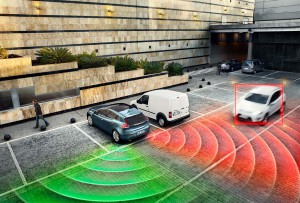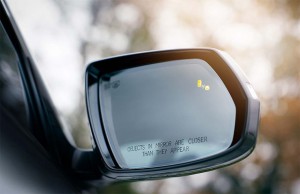A major new safety technology frequently fails to work as promised, according to a new study by the AAA, leading to parking lot crashes and injuries to pedestrians and bicyclists.
The problem is complicated by the fact that more than three quarters of U.S. drivers “park incorrectly,” the road service and safety organization reported. That further enhances the risk of accidents in parking lots, according to the AAA study.
“Recognizing that American parking habits differ from much of the world, automakers are increasingly adding technology to vehicles that is designed to address rear visibility concerns,” said John Nielsen, AAA’s managing director of Automotive Engineering and Repair. “However, AAA’s testing of these systems reveals significant shortcomings when used in real-world conditions and Americans should rely more on driving skills than technology.”
The root of the problem is the way Americans typically park in shopping center and mall lots, 76% pulling forward, rather than backing into spots. That practice leaves pedestrians and bicyclists more vulnerable, while increasing the risk of a driver backing out into traffic.
(Flatlining: what happened to the spare tire? Click Here to learn more.)
That’s where the new cross traffic alert technology comes in. It uses high-frequency radar “blisters” hidden beneath a vehicle’s rear fascia, looking sideways as the vehicles backs out of a spot. Cross traffic alert systems are designed to detect ongoing traffic, as well as bicyclists and pedestrians, but the AAA study found that such systems fail to work properly “at alarming rates:
- In 48% of the tests, the systems failed to detect a passing motorcycle; and
- Even bigger automobiles were missed in 30% of the tests;
- The systems tests failed to spot a bicycle 40% of the time, and pedestrians 60% of the time.
“AAA’s independent testing showed that rear cross traffic alert systems failed to work effectively in several test vehicles,” cautioned Megan McKernan, manager of the Automobile Club of Southern California’s Automotive Research Center.
McKernan stressed that cross traffic alert systems should be viewed as an aid to drivers, and not something that can replace a driver’s own judgement. Motorists should reverse into a spot, according to the safety agency and if they can’t or won’t, they should back out of a parking place slowly and rely on their own vision to look for obstacles, rather than depending on technology to do the job for them.
(After long decline, U.S. crash deaths again on the rise. Click Here to find out why.)
The AAA has been a frequent skeptic when it comes to new, active safety technologies, as have other experts who warn such systems can lull a motorist into having a false sense of security. That said, the automobile club did have positive things to say about backup camera technology which its tests showed can increase rear visibility by as much as 46%. Backup cameras are becoming increasingly common and will be mandated by the National Highway Traffic Safety Administration come 2018.
Despite varying degrees of effectiveness, safety advocates generally praise the auto industry for adding more of these active safety features. And there’s more coming. This week, NHTSA announced changes to both its crash rating procedures and its safety awards system. Going forward, the agency will consider a list of nine different safety technologies, such as forward collision warning, when issuing crash ratings on new vehicles.
(For more on the revised NHTSA safety procedures, Click Here.)



Woo Hoo. Finally I am doing something right. I have found it is far easier to back in rather than back out. Especially considering I drive a pickup or even trying to back out in a car when an SUV or van is on my blocking side.
It’s no surprise that the software fails to function properly. Wait until we see the accidents and injuries from improperly rushed-to-market AVs with improper programming. It’s completely irresponsible and outrageous to allow such poorly performing systems to be installed on vehicles.